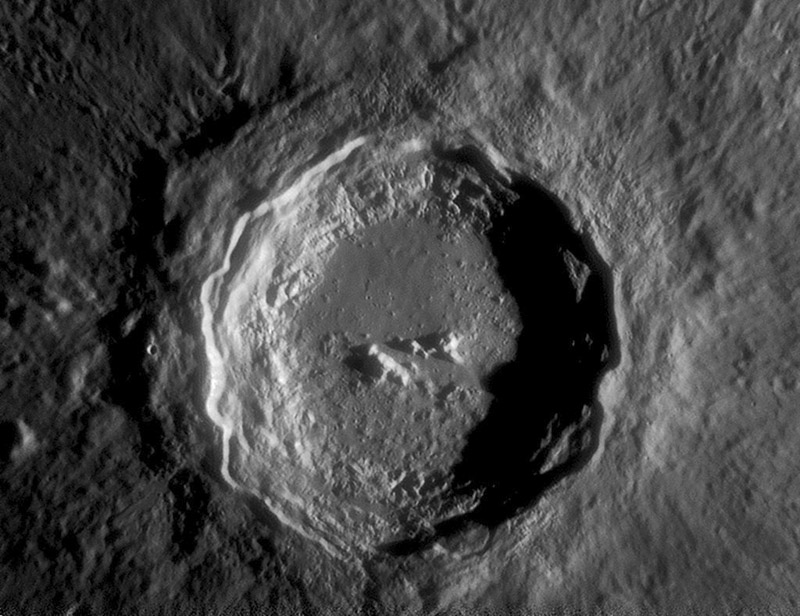Difference between revisions of "March 23, 2013"
| (7 intermediate revisions by the same user not shown) | |||
| Line 1: | Line 1: | ||
__NOTOC__ | __NOTOC__ | ||
=Crater Morphology And Process= | =Crater Morphology And Process= | ||
| + | <!-- Start of content --> | ||
<!-- ws:start:WikiTextHeadingRule:0:<h1> --> | <!-- ws:start:WikiTextHeadingRule:0:<h1> --> | ||
<!-- ws:start:WikiTextLocalImageRule:6:<img src="/file/view/LPOD-Mar23-13.jpg/417202024/LPOD-Mar23-13.jpg" alt="" title="" /> -->[[File:LPOD-Mar23-13.jpg|LPOD-Mar23-13.jpg]]<!-- ws:end:WikiTextLocalImageRule:6 --><br /> | <!-- ws:start:WikiTextLocalImageRule:6:<img src="/file/view/LPOD-Mar23-13.jpg/417202024/LPOD-Mar23-13.jpg" alt="" title="" /> -->[[File:LPOD-Mar23-13.jpg|LPOD-Mar23-13.jpg]]<!-- ws:end:WikiTextLocalImageRule:6 --><br /> | ||
| − | <em>image by [http://www.stellarzac.com/astro.html | + | <em>image by [http://www.stellarzac.com/astro.html Frédéric Gea]; processed by Frédéric Géa & [mailto:tosi.philippe@wanadoo.fr Philippe Tosi], France</em><br /> |
<br /> | <br /> | ||
| − | This glorious image brings to mind some of the new information from the Lunar and Planetary Science Conference this week. The largest deposits of impact melt in most craters occur on crater floors - as seen here in the smooth northwest quadrant of the floor of Copernicus (and notice the elongated ponds on rim terraces). A [http://www.lpi.usra.edu/meetings/lpsc2013/pdf/2152.pdf | + | This glorious image brings to mind some of the new information from the Lunar and Planetary Science Conference this week. The largest deposits of impact melt in most craters occur on crater floors - as seen here in the smooth northwest quadrant of the floor of Copernicus (and notice the elongated ponds on rim terraces). A [http://www.lpi.usra.edu/meetings/lpsc2013/pdf/2152.pdf study] of impact melt around Tycho as seen on LRO images discovered 3010 melt ponds, many more than seen before, most beyond the crater rim. Previous estimates of the volume of impact melt were probably under-estimates, meaning that more of the energy of impact went into melting rocks than previously thought. Another [http://www.lpi.usra.edu/meetings/lpsc2013/pdf/2789.pdf report] at LPSC measured layers of lava flows exposed on the inner walls of crater rims. These were pre-existing mare lavas penetrated and upwarped by the formation of an impact crater. The fragmental ejecta above the layers represents the fallback ejecta. In the 1970s, studies suggested that the heights of crater walls were about 50% due to ejecta and 50% uplift of the existing surface rocks. Based on five craters it looks like ejecta constitutes only 20-25% of rim height. Copernicus' rim height above the surrounding terrain is about 1200 - 1500 m, so fallback ejecta may makeup only the top 200 to 300 m; that is only the top part of the bright scarp just below the rim crest. So again, dynamic models of crater formation may need to be refined to properly represent the correct amounts of uplift and ejecta. <br /> |
<br /> | <br /> | ||
| − | <em>[mailto:tychocrater@yahoo.com | + | <em>[mailto:tychocrater@yahoo.com Chuck Wood]</em><br /> |
<br /> | <br /> | ||
<strong>Technical Details</strong><br /> | <strong>Technical Details</strong><br /> | ||
| Line 13: | Line 14: | ||
<br /> | <br /> | ||
<strong>Related Links</strong><br /> | <strong>Related Links</strong><br /> | ||
| − | Rükl plate [ | + | Rükl plate [https://the-moon.us/wiki/R%C3%BCkl_31 31]<br /> |
| − | <em>[ | + | <em>[[21st Century Atlas of the Moon|21st Century Atlas]]</em> chart 17.<br /> |
<br /> | <br /> | ||
| + | <p><b>Yesterday's LPOD:</b> [[March 22, 2013|LPOD At LPSC]] </p> | ||
| + | <p><b>Tomorrow's LPOD:</b> [[March 24, 2013|Dents, Chains And Superposition]] </p> | ||
<hr /> | <hr /> | ||
| + | {{wiki/ArticleFooter}} | ||
Latest revision as of 08:31, 28 October 2018
Crater Morphology And Process

image by Frédéric Gea; processed by Frédéric Géa & Philippe Tosi, France
This glorious image brings to mind some of the new information from the Lunar and Planetary Science Conference this week. The largest deposits of impact melt in most craters occur on crater floors - as seen here in the smooth northwest quadrant of the floor of Copernicus (and notice the elongated ponds on rim terraces). A study of impact melt around Tycho as seen on LRO images discovered 3010 melt ponds, many more than seen before, most beyond the crater rim. Previous estimates of the volume of impact melt were probably under-estimates, meaning that more of the energy of impact went into melting rocks than previously thought. Another report at LPSC measured layers of lava flows exposed on the inner walls of crater rims. These were pre-existing mare lavas penetrated and upwarped by the formation of an impact crater. The fragmental ejecta above the layers represents the fallback ejecta. In the 1970s, studies suggested that the heights of crater walls were about 50% due to ejecta and 50% uplift of the existing surface rocks. Based on five craters it looks like ejecta constitutes only 20-25% of rim height. Copernicus' rim height above the surrounding terrain is about 1200 - 1500 m, so fallback ejecta may makeup only the top 200 to 300 m; that is only the top part of the bright scarp just below the rim crest. So again, dynamic models of crater formation may need to be refined to properly represent the correct amounts of uplift and ejecta.
Chuck Wood
Technical Details
Self made newton 1M F/3 with dmk 31 + 742nm IR filter. Televue barlow 3x lens; approx 300 images stacked with registax 6 and CS5
Related Links
Rükl plate 31
21st Century Atlas chart 17.
Yesterday's LPOD: LPOD At LPSC
Tomorrow's LPOD: Dents, Chains And Superposition
COMMENTS?
Register, Log in, and join in the comments.



